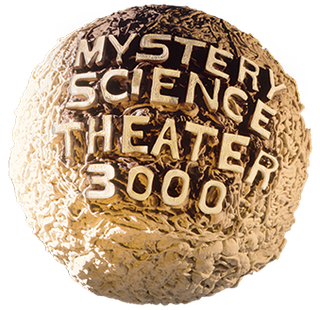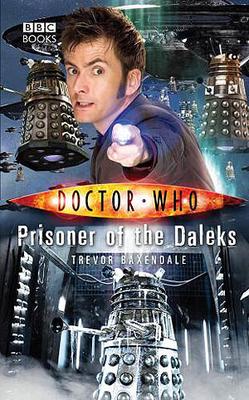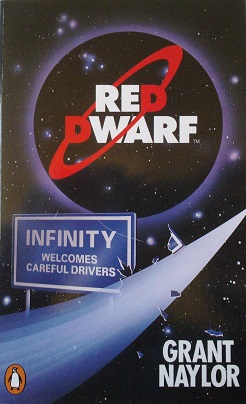
Interplanetary spaceflight or interplanetary travel is the crewed or uncrewed travel between stars and planets, usually within a single planetary system. In practice, spaceflights of this type are confined to travel between the planets of the Solar System. Uncrewed space probes have flown to all the observed planets in the Solar System as well as to dwarf planets Pluto and Ceres, and several asteroids. Orbiters and landers return more information than fly-by missions. Crewed flights have landed on the Moon and have been planned, from time to time, for Mars, Venus and Mercury. While many scientists appreciate the knowledge value that uncrewed flights provide, the value of crewed missions is more controversial. Science fiction writers propose a number of benefits, including the mining of asteroids, access to solar power, and room for colonization in the event of an Earth catastrophe.

Mystery Science Theater 3000 is an American science fiction comedy film review television series created by Joel Hodgson. The show premiered on KTMA-TV in Minneapolis, Minnesota, on November 24, 1988. It then moved to nationwide broadcast, first on The Comedy Channel/Comedy Central for seven seasons until its cancellation in 1996. Thereafter, it was picked up by The Sci-Fi Channel and aired for three more seasons until another cancellation in August 1999. A 60-episode syndication package titled The Mystery Science Theater Hour was produced in 1993 and broadcast on Comedy Central and syndicated to TV stations in 1995. In 2015, Hodgson led a crowdfunded revival of the series with 14 episodes in its eleventh season, first released on Netflix on April 14, 2017, with another six-episode season following on November 22, 2018. A second successful crowdfunding effort in 2021 produced 13 additional episodes shown on the Gizmoplex, an online platform that Hodgson developed which launched in March 2022. As of 2023, 230 episodes and a feature film have been produced as well as three live tours.

Spaceflight is an application of astronautics to fly objects, usually spacecraft, into or through outer space, either with or without humans on board. Most spaceflight is uncrewed and conducted mainly with spacecraft such as satellites in orbit around Earth, but also includes space probes for flights beyond Earth orbit. Such spaceflight operate either by telerobotic or autonomous control. The more complex human spaceflight has been pursued soon after the first orbital satellites and has reached the Moon and permanent human presence in space around Earth, particularly with the use of space stations. Human spaceflight programs include the Soyuz, Shenzhou, the past Apollo Moon landing and the Space Shuttle programs. Other current spaceflight are conducted to the International Space Station and to China's Tiangong Space Station.

Battle of the Planets is an American adaptation of the Japanese anime series Science Ninja Team Gatchaman (1972). Of the 105 original Gatchaman episodes, 85 were used in the Battle of the Planets adaptation, produced by Sandy Frank Entertainment. The adaptation was generally faithful to the plot and character development of the original Gatchaman series, but significant additions and reductions were made in order to increase appeal to the North American television market of the late 1970s, as well as avoid controversy from parents; these included the removal of elements of graphic violence and profanity.

Crow The Robot is a fictional character from the American science fiction comedy television series Mystery Science Theater 3000 (MST3K). Crow is a robot, who, along with others, ridicules poor-quality B to Z movies.
"Mind War" is the sixth episode of the first season of the science fiction television series, Babylon 5.

GPC, formerly Gypsy, is one of the fictional robot characters on the television series Mystery Science Theater 3000. She is larger and less talkative than the other robots. GPC normally only appears during the show's host segments and introduction, but briefly took a seat in the theater to watch the movie in episode #412. She only delivered a couple of "riffs" – partially because she took the movie and what the 'boys' were saying too literally, and left after realizing how bad the movie was. Along with the other robots, GPC was designed and built by series creator Joel Hodgson. She was named Gypsy after a pet turtle his brother once owned, as the robot's size and ponderousness reminded him of the turtle.
Underworld is the fifth serial of the 15th season of the British science fiction television series Doctor Who, which was first broadcast in four weekly parts on BBC1 from 7–28 January 1978.

Have Rocket, Will Travel is a 1959 American science-fiction comedy film released by Columbia Pictures and starring the Three Stooges, consisting of Moe Howard, Larry Fine and new addition Joe DeRita. The film was produced to capitalize on the Three Stooges' late-1950s resurgence in popularity. The supporting cast features Anna-Lisa and Robert Colbert.
Star Wars: Galaxy of Fear is a series of 12 young adult, science fiction horror novels set in the Star Wars galaxy six months after Star Wars: Episode IV – A New Hope. The series was written by John Whitman, and released from February 1997 through to October 1998. The books ranged from 100 pages to 200 pages in large print.
"Love and Rocket" is the third episode in the fourth season of the American animated television series Futurama, and the 57th episode of the series overall. It first aired on the Fox network in the United States on February 10, 2002. The episode is a Valentine's Day-themed episode that centers on Bender's relationship with the artificial intelligence of the Planet Express Ship. The subplot involves Fry trying to express his feelings for Leela through the use of Valentine's Day candy. The episode parodies 2001: A Space Odyssey.

The Ice Pirates is a 1984 American comic science fiction film directed by Stewart Raffill, who co-wrote the screenplay with Krull writer Stanford Sherman. The film stars Robert Urich, Mary Crosby and Michael D. Roberts; other notable featured actors are Anjelica Huston, Ron Perlman, Bruce Vilanch, John Carradine and former football player John Matuszak.

Milcząca Gwiazda, literal English translation The Silent Star, is a 1960 East German/Polish color science fiction film based on the 1951 science fiction novel The Astronauts by Polish science fiction writer Stanisław Lem. It was directed by Kurt Maetzig, and stars Günther Simon, Julius Ongewe and Yoko Tani. The film was first released by Progress Film in East Germany, running 93 min. Variously dubbed and cut versions were also released in English under other titles: First Spaceship on Venus, Planet of the Dead, and Spaceship Venus Does Not Reply.

Prisoner of the Daleks is a BBC Books original novel written by Trevor Baxendale and based on the long-running British science fiction television series Doctor Who. It features the Tenth Doctor without a companion and was released on 2 April 2009, alongside Judgement of the Judoon and The Slitheen Excursion.

Red Dwarf: Infinity Welcomes Careful Drivers is a best-selling science fiction comedy novel by Grant Naylor, the collective name for Rob Grant and Doug Naylor, co-creators and writers of the Red Dwarf television series, on which the novel is based. First published in 1989, the novel presents the plotline of the TV series as a cohesive linear narrative, providing expanded backstory of the Red Dwarf world and more fully developing each of the characters, particularly Dave Lister and Arnold Rimmer. The book incorporates elements and scenes from the first and second-season episodes The End, Future Echoes, Kryten, Me² and Better Than Life. In 1990, the book was followed by a sequel, Better Than Life.

War of the Planets (Italian: I Diafanoidi Vengono da Marte, lit. 'The Diaphanoids Come From Mars' is a 1966 Italian science fiction film, produced by Joseph Fryd and Antonio Margheriti, directed by Margheriti, that stars Tony Russel and Lisa Gastoni. The film was released theatrically in 1966 throughout Europe. Its storyline and screenplay were written by Ivan Reiner and Renato Moretti.

The Falcon in San Francisco is a 1945 American crime and mystery film directed by Joseph H. Lewis and stars Tom Conway, Rita Corday and Edward Brophy, who played the recurring role of "Goldie" Locke. The film was the 11th in The Falcon series of detective films, and the eighth featuring Conway as the amateur sleuth. The Falcon in San Francisco was the final film in the series produced by Maurice Geraghty, after which budgets were reduced and location shooting largely abandoned.

"One Door Closes" is the fifteenth episode of the second season of the American television series Agents of S.H.I.E.L.D. Based on the Marvel Comics organization S.H.I.E.L.D., it follows Phil Coulson and his team of S.H.I.E.L.D. agents as they face a rival faction of S.H.I.E.L.D. It is set in the Marvel Cinematic Universe (MCU) and acknowledges the franchise's films. The episode was written by Lauren LeFranc and Rafe Judkins, and directed by David Solomon.

The Orion Loop is a 1981 Soviet science fiction film directed by Vasily Levin.













